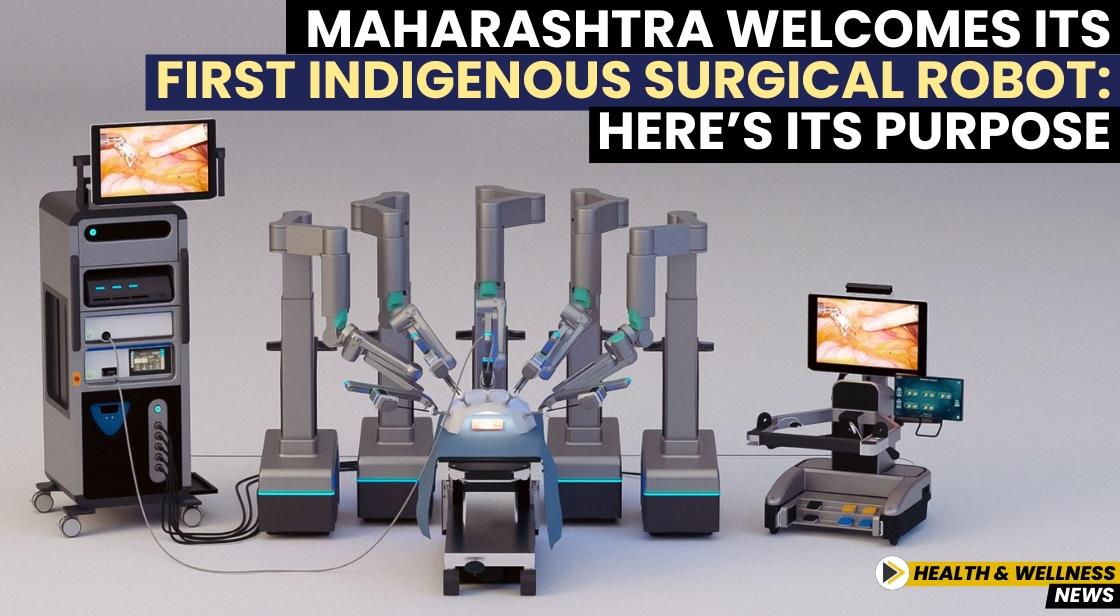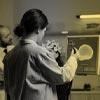Maharashtra Welcomes Its First Indigenous Surgical Robot: Here’s Its Purpose

News Synopsis
Maharashtra has marked a significant achievement in healthcare with the installation of its first made-in-India surgical robot, the SSI Mantra, at Pune's Noble Hospitals and Research Centre. Approved by the Central Drugs Standard Control Organisation (CDSCO), this advanced robotic system is designed for performing intricate surgeries with precision and efficiency.
Features of the SSI Mantra Robotic System
The SSI Mantra is a state-of-the-art surgical robot comprising:
-
Three Robotic Arms: Designed for seamless handling of complex procedures.
-
Immersive 3D HD Headset: Provides surgeons with unparalleled optics and depth perception.
-
Five Lean Robotic Arms: Ensures precision and flexibility during surgeries.
-
3D 4K Vision Cart: Offers a clear, high-definition view of the surgical field for the entire team.
Inaugurated by Marathi actor Prasad Oak, this robotic system aims to revolutionize surgical procedures in Maharashtra.
Applications of Robotic Surgery at Noble Hospitals
According to Dr. Ashish Pokharkar, Oncosurgeon at Noble Hospitals, the SSI Mantra system will be utilized for a range of life-saving procedures, including:
-
General surgeries
-
Cardio-thoracic operations
-
Urology and gynecology procedures
-
Complex oncological surgeries
The hospital recently conducted its first robotic surgery—a right extended hemicolectomy—on a patient diagnosed with colon carcinoma.
Benefits of Robotic Surgery for Patients
Dr. H.K. Sale, Executive Director at Noble Hospitals, highlighted the advantages of robotic surgery in improving patient outcomes:
-
Minimally Invasive Technique: Utilizes fingertip-sized incisions for reduced trauma.
-
Enhanced Precision and Flexibility: Achieves better results compared to traditional laparoscopic or open surgery.
-
Faster Recovery: Patients experience shorter hospital stays, less discomfort, and quicker return to routine activities.
Understanding Robotic Surgery
Robotic surgery involves doctors operating robotic arms through a console. Key components include:
-
A 32-inch 3D monitor for real-time visualization of the surgical area.
-
Safety cameras that enhance operational precision and detect the surgeon's presence.
Origins of India’s Surgical Robotic Technology
India's journey in surgical robotics began in 2017 with the development of the SSI Mantra by Dr. Sudhir Srivastava. This modular robot features over five detachable arms, making it versatile for various surgeries, including cardiac procedures.
The first Indian-made surgical robot system was installed at Rajiv Gandhi Cancer Institute in New Delhi, followed by installations in Hyderabad and Raipur.
Telesurgery and Teleproctoring: A Revolutionary Advancement
The SSI Mantra is the first robotic system in India to receive CDSCO approval for telesurgery and teleproctoring. These technologies allow:
-
Remote Surgery: Surgeons can perform operations from distant locations.
-
Access to Expertise: Enables patients in remote areas to benefit from specialized care.
Dr. Sudhir Srivastava, Founder and CEO of SS Innovations, emphasized the potential of this technology in decentralizing surgical expertise, thereby making advanced healthcare accessible to underserved regions.
Global Expansion of SSI Mantra
The SSI Mantra robotic system has also gained international recognition. In July 2024, it was launched in Nepal at B&B Hospital in Gwarko, Lalitpur, marking its growing footprint in South Asia.
Conclusion
The installation of Maharashtra's first made-in-India surgical robot, the SSI Mantra, represents a groundbreaking step in the evolution of healthcare technology in India. This innovative system is not only a testament to the country’s capability in developing advanced medical technologies but also a beacon of hope for improved patient outcomes through precision and minimally invasive techniques. The integration of telesurgery and teleproctoring further underscores the potential to democratize surgical expertise, making world-class healthcare accessible even in remote areas. As this technology continues to gain momentum locally and internationally, it signifies a brighter, more efficient, and patient-centric future for medical science.
You May Like









